The case provides its own control for purposes of. 2005 listed several characteristics that make single-subject designs appropriate for the needs of the special education field.

Single Subject Design Ppt Download
Graphing the data facilitates monitoring and evaluating the impact of the intervention.
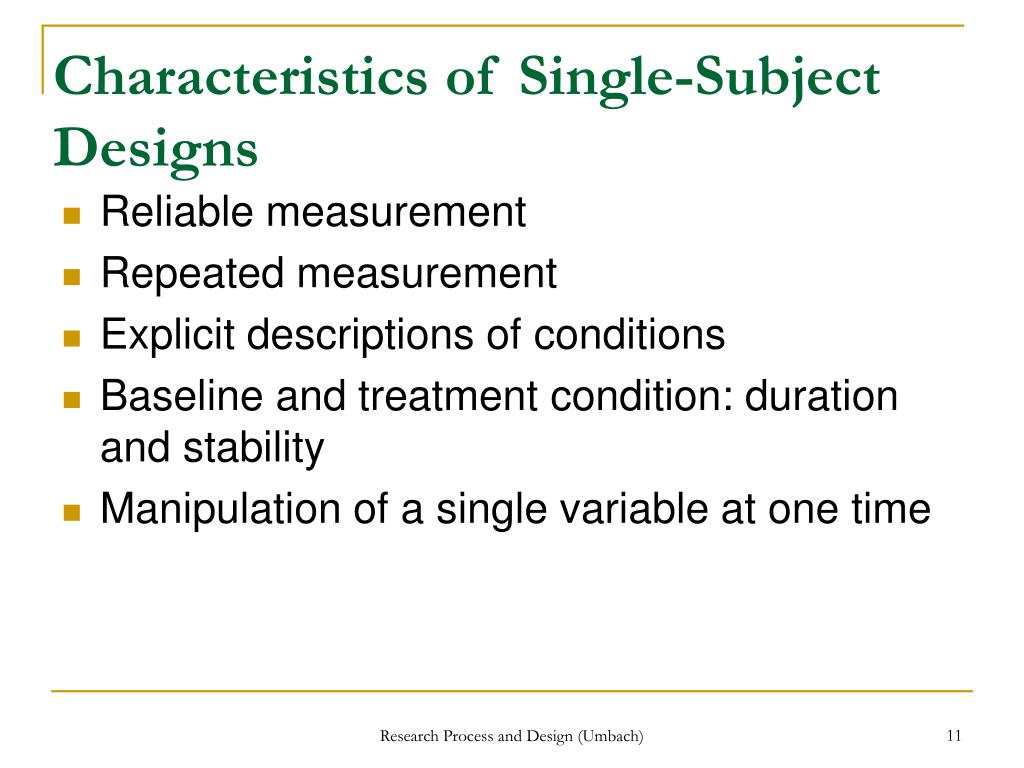
. 3 Description of. The y axis is used to represent the scores of the dependent variable whereas the x axis represents a unit of time such as an hour a day a week or a month. Data collected prior to during and following the intervention allow measurement of changes.
The term single-case study is preferred over the previously mentioned terms because previous terms suggest these studies include only one participant. First single-subject designs are focused on individual. Characteristics of Single-SubjectSystem Designs According to Kratochwill and Williams 1988 single-case experimental designs have following five characteristics.
The phases of a single-subject design are almost always summarized on a graph. Third single-subject designs can be tives of this paper are 1 to present the methodological implemented under typical educational conditions avoiding characteristics of single-subject research designs 2 to the frequent concern that experiments may be performed in present the types of single-subject research design that contexts that. You may have a greater risk of demand characteristics in a single-blind design compared to a double-blind design.
The baseline phase is signified by the letter s____. Single-case SC studies have been identified by a variety of names including n of 1 studies and single-subject studies. Visual inspection of data Small number of participants SSEDs -Must meet the selection criteria.
This understanding will allow. An individual case is the unit of intervention and unit of data analysis. Specifically I will discuss a the history of single-subject designs in psychology b problems with large-N designs and why single-subject designs have regained some popularity in the past 30 to 40 years c characteristics shared by different single-subject designs and d some of the most common single-subject designs.
Benefits of Single Subject Design Study low incidence populations and behaviors Cost effective Evaluate intervention prior to large scale study Flexible design is adaptable to situation Can be conducted in practice settings Test clinical hypotheses Monitor progress in applied settings Limitations of Single Subject Design. Basic Features and Components of Single-Subject Experimental Designs Defining Features Single-subject designs are defined by the following features. In design of experiments single-subject curriculum or single-case research design SCED is a research design most often used in applied fields of psychology education and human behavior in which the subject serves as hisher own control rather than using another individualgroup.
Researchers use single-subject design because these designs are sensitive to. This phase is different from most experiments in. McMillan Reference McMillan 2004 identified five defining characteristics of single-subject designs that rendered them an appropriate method for research within this field.
Single subject research designs are weak when it comes to external validityStudies involving single-subject designs that show a particular treatment to be effective in changing behavior must rely on replicationacross individuals rather than groupsif such results are be found worthy of generalization Fraenkel Wallen 2006 p. Characteristics of Single-Subject Experimental Designs 1. During the first phase A a is established for the dependent variable.
First such designs can demonstrate clear causal relations between intervention and behavior change. These characteristics include the use of repeated measures over a minimum of two conditions inclusion of a baseline and treatment condition reliable means of measurement explicit description of. The purpose of this article is to review the strategies and tactics of SSEDs and their application in speech-language pathology research.
Small number of participants 2. Since these designs contain many measures of behavior it is important to have reliable. Repeated measurement of the DV 4.
Some participants are assigned to a control group while others are in a treatment group. The same behavior is measured repeatedly. Specifically I will discuss a the history of single-subject designs in psychology b problems with large-N designs and why single-subject designs have regained some popularity in the past 30 to 40 years c characteristics shared by different single-subject designs and d some of the.
Single-subject experimental designs SSEDs represent an important tool in the development and implementation of evidence-based practice in communication sciences and disorders. Analysis of significance C. Whereas the treatment phase is signified by the letter s_____.
Despite their limited use single-subject research designs have significant methodological advantages over large-sample research designs that could be used to facilitate more rapid clinical research advances. Single-Subject Research Designs General Features of Single-Subject Designs. This is the level of.
Before looking at any specific single-subject research designs it will be. The researcher repeatedly assesses the DV across various phases of the experiment. Up to 10 cash back This article reports the results of a study that located digitized and coded all 809 single-case designs appearing in 113 studies in the year 2008 in 21 journals in a variety of fields in psychology and education.
It is essential for educators to understand the characteristics. Single-blind and double-blind designs In a follow-up study you use a between-subjects single-blind design. Which of the following is NOT a characteristic of single-subject design.
Characteristics of Single-Subject experimental designs SSEDs Small number of participants Importance of individual differences Repeated measurement of the dependent variables Available participants Logical generality Visual inspection of data Small of participants Small number of available participants who meet the selection criteria. Characteristics of single subject design 1 Reliable measurement. Single Subject Research Designs SSRDs work by designing an experiment where instead of a control group of subjects and an experimental group of subjects whose results are compared to one another the control and experimental measurements come from a single subject.
Coded variables included the specific kind of design number of cases per study number of outcomes data points and phases per. Characteristics of single subject design 1 Reliable measurement. Importance of individual differences 3.

Single Subject And Correlational Research Bring Schraw Et Al Ppt Download
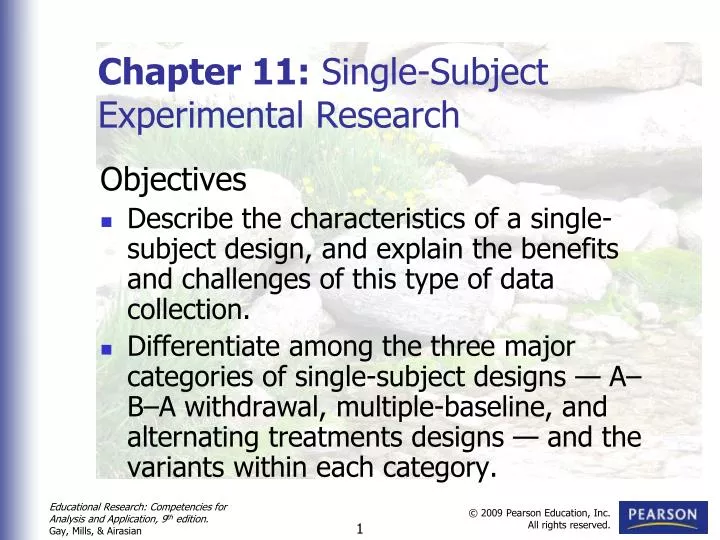
Ppt Chapter 11 Single Subject Experimental Research Powerpoint Presentation Id 4529481

Ppt Experimental Research Designs Part 2 Powerpoint Presentation Free Download Id 315673

Ppt Single Subject Research Design In A School System Powerpoint Presentation Id 726774
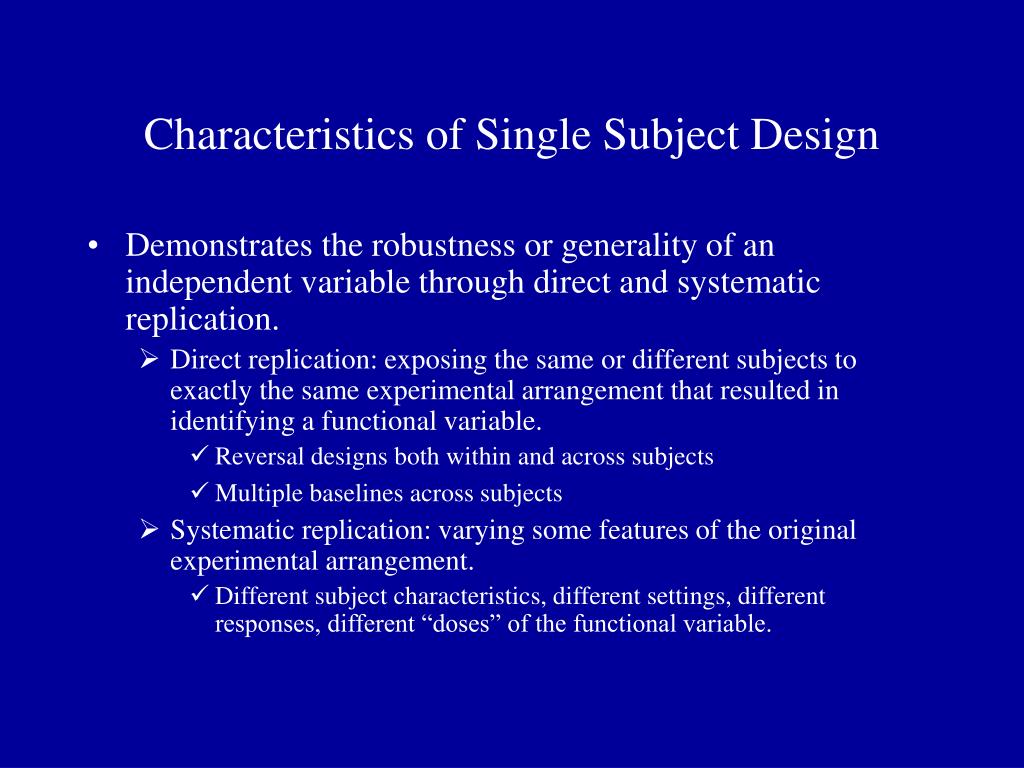
Ppt Single Subject Research And Evidence Based Interventions Are Ssds Really The Ugly Stepchild Powerpoint Presentation Id 352941

Quasi Experimental And Single Case Experimental Designs Ppt Download
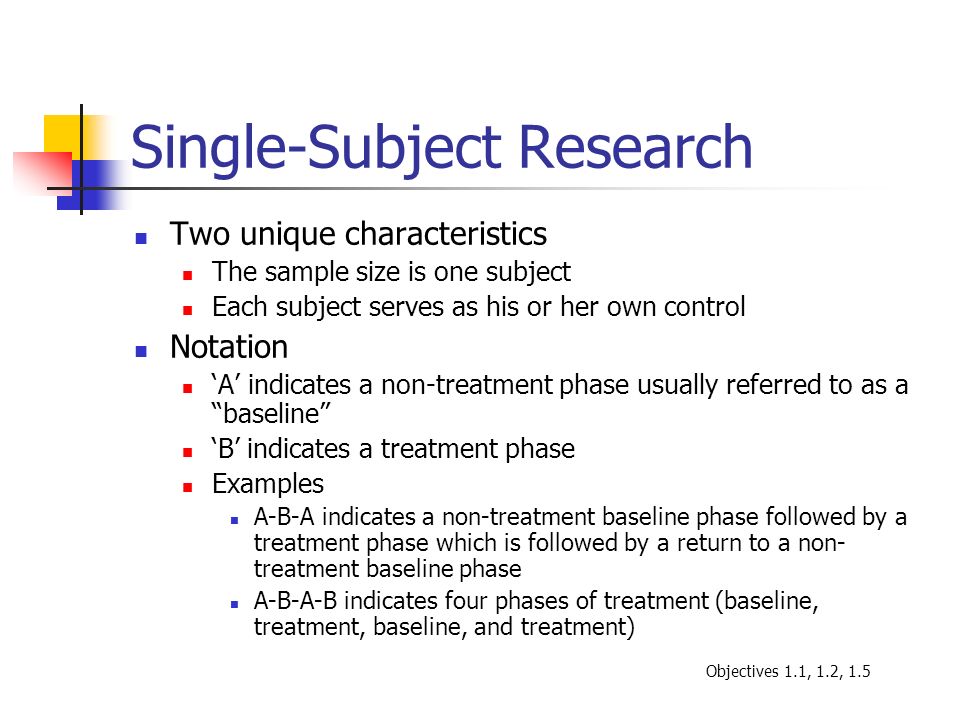
Single Subject Experimental Research Ppt Video Online Download
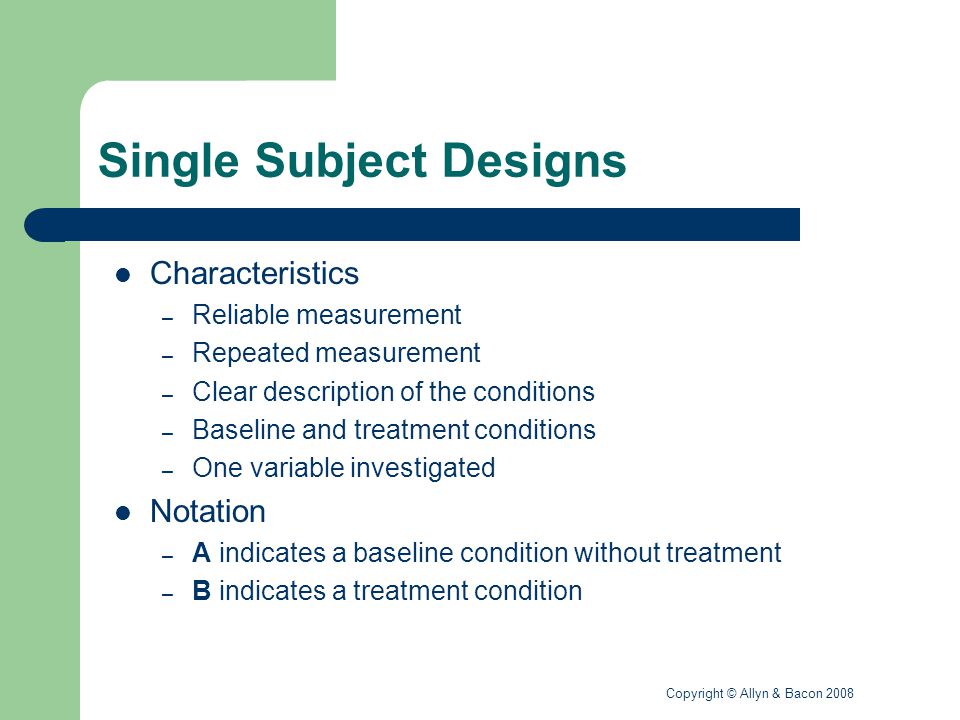
0 comments
Post a Comment